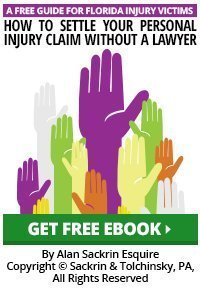Last Update: 01/25/16
Fentanyl is a pain medication that is considered to be 100 times more powerful than morphine. Fentanyl has been around since the early 1960s, but it gained popularity in the United States for its pain-relieving abilities as a skin patch in the 1990s. Today, Fentanyl is present not only in skin transdermal patches but also medicinal lollipops and mouth sprays as well as in pill and tablet form.

Fentanyl Skin Patches are all too often the cause of death for those who are victims of prescription errors and drug dosage mistakes.
What is Fentanyl Used For? Pain Relief.
Fentanyl is a recognized help to people who suffer from a variety of diseases and conditions, including various forms of cancer and multiple sclerosis. It’s a serious medication. You may not recognize the name “fentanyl” but the brand names Duragesic (patch) as well as Actiq, Duragesic, Fentora, or Sublimaze may be familiar to you.
Fentanyl is an opioid or narcotic, and it is a popular pain drug in this country (as are oxycodone, morphine, and hydrocodone). In fact, Fentanyl patches are all too popular among doctors and others who are legally able to prescribe medications.
FDA Warns That Fentanyl Patches Are Being Prescribed in Error by Doctors and Others.
So much so, that the FDA has officially warned that fentanyl is being improperly prescribed by doctors and other medical professionals all too often. From the FDA:
Fentanyl patches should not be used for short-term acute pain, pain that is not constant, or for pain after an operation. The patch is only for moderate-to-severe chronic pain that is expected to last for any number of weeks or longer and that cannot be managed by acetaminophen-opioid combinations, nonsteroidal analgesics, or as-needed dosing with short-acting opioids.
Recent reports to FDA describe deaths and life-threatening side effects after doctors and other health care professionals inappropriately prescribed the patch to relieve pain after surgery, for headaches, or for occasional or mild pain in patients who were not opioid tolerant.
It’s a recognized problem within the medical industry that fentanyl is getting mis-prescribed.
Fentanyl transdermal patches are being given out by doctors improperly. Yes, doctors and surgeons are making fentanyl mistakes. However, nurses and pharmacists are also making deadly medication mistakes with fentanyl pain patches that are leading to patient deaths caused by too much fentanyl in their system, or in a toxic combination of fentanyl with other medications including oxycodone and acetaminophen. (For two case examples from the National Institute of Health, go here.)
Fentanyl is also recognized as a major risk for medication errors and drug dosage mistakes by patients and their caretakers.
The Food and Drug Administration has warned patients who have been prescribed fentanyl skin patches explaining that “…directions on the product label and package insert of the fentanyl transdermal system should be followed exactly in order to avoid overdose.”
Infants, toddlers, and small children are particularly vulnerable to fentanyl poisoning, and there have been far too many instances where children have died or become seriously ill from exposure of fentanyl in their blood stream. How does this happen?
Sometimes the child gets a hold of a Fentanyl Patch and plays with it — with the pain medication entering the child’s body through touch, taste, or smell. Other times, nursing mothers or parents simply holding their child near the patch can be enough for the child to suffer serious, accidental exposure to the Fentanyl patch.
In fact, because so many children have died as the result of fentanyl medication errors, the FDA is mandating that drug companies that are manufacturing or packaging fentanyl skin patches change the labels so that warnings are more easily seen by adults — including changing the color of the words on the packages as well as clearly identifying the strength of the drug dosage of fentanyl on each patch so it is easily seen. Be careful!
What Should You Do Now?
A good piece of advice if you have been harmed by a medication error, is to at least speak with an experienced personal injury lawyer before you file a claim to learn about some of the issues that can arise with these claims, including the type of evidence needed to prove a claim and the type and amount of damages you can recover. Most personal injury lawyers, like Alan Sackrin, will offer a free initial consultation (over the phone or in person) to answer your questions.
Related:
- Medication Errors: Medicine Mistakes and Drug Errors Kill and Seriously Hurt Patients – A Shocking Secret Revealed
- Florida AG Pam Bondi Joins 42 Other Attorneys General in Demanding Action from FDA Regarding Prescription Drugs and NAS
- Florida’s In-Store Medical Clinics: How Dangerous are These Store Walk-in Health Clinics Without Doctors for Medication Errors and Drug Mistakes?
_______________
 Do you have questions or comments? Then please feel free to send Alan an email or call him now at (954) 458-8655.
Do you have questions or comments? Then please feel free to send Alan an email or call him now at (954) 458-8655.
